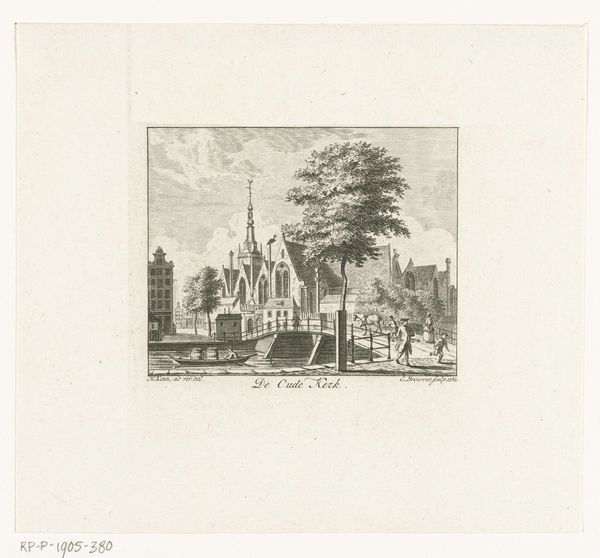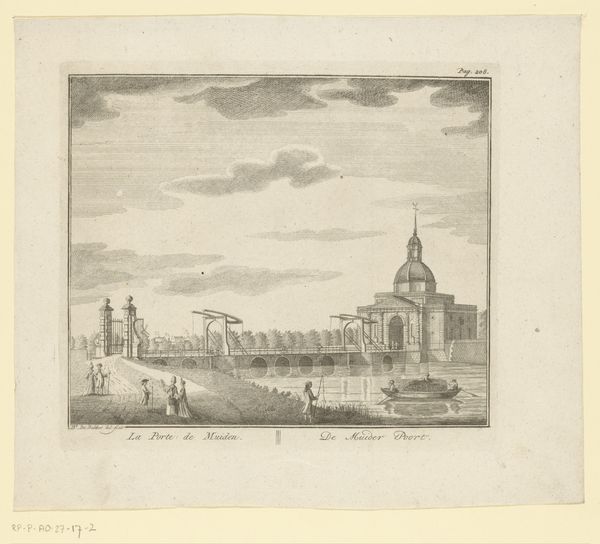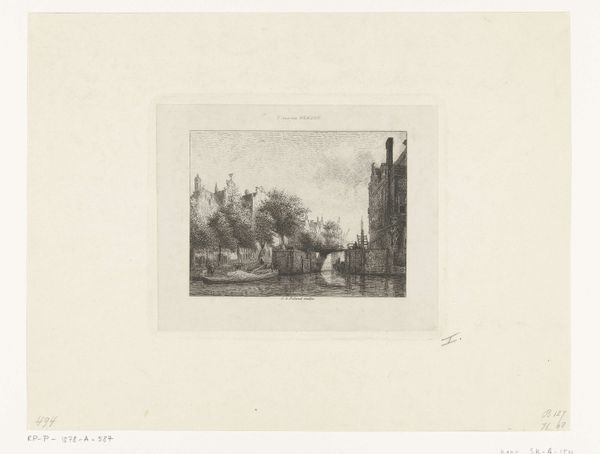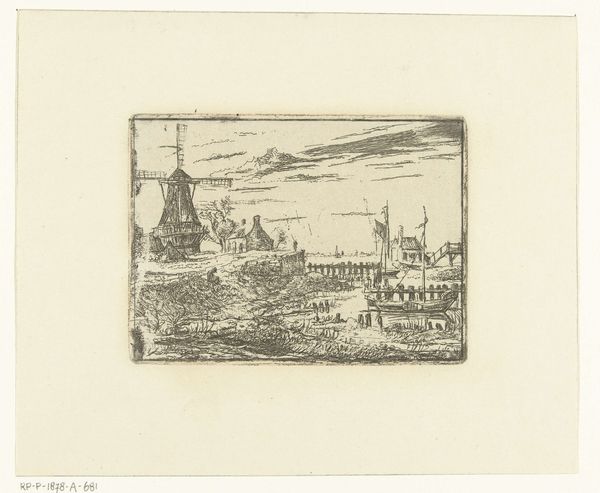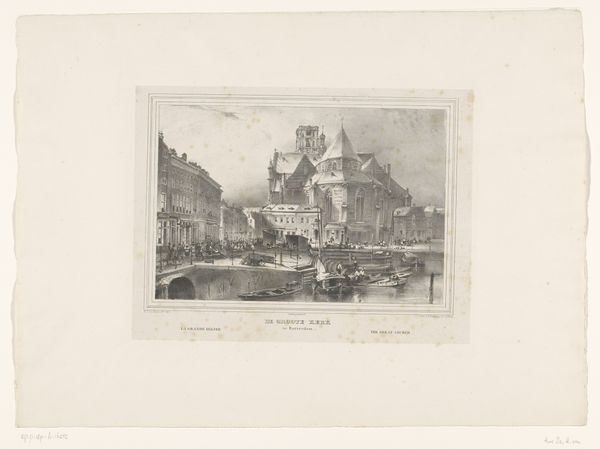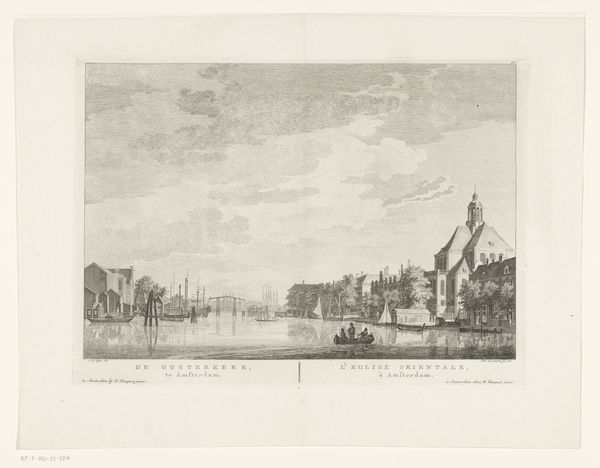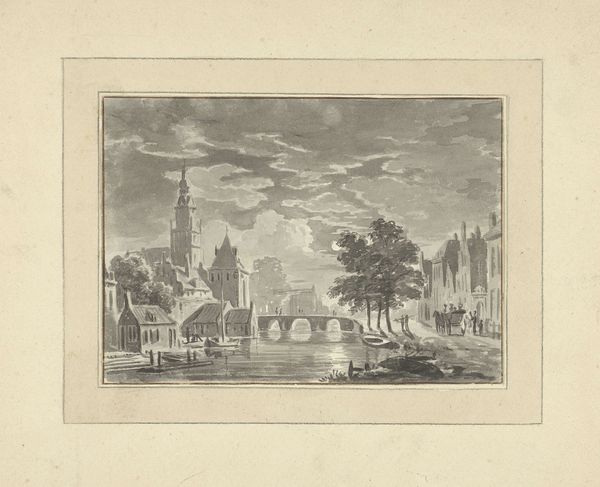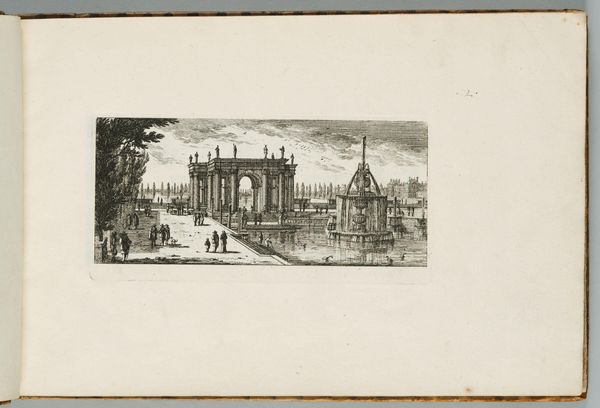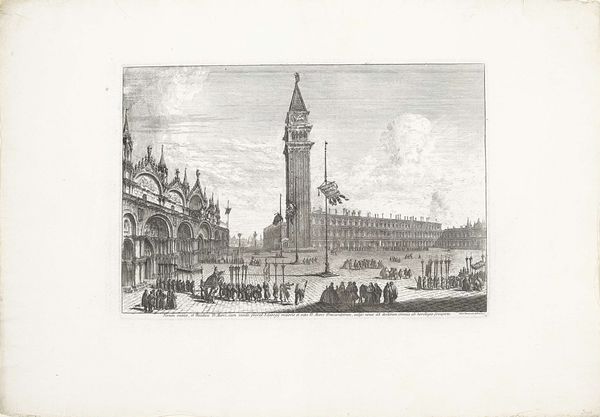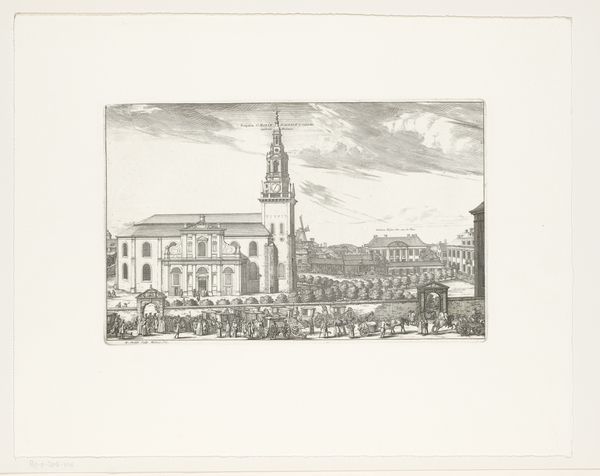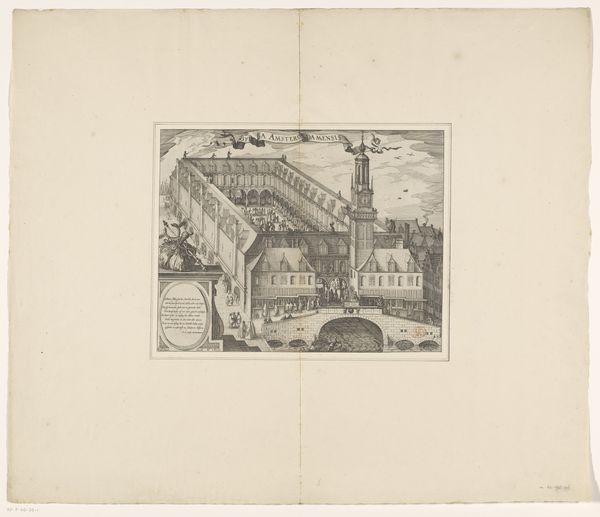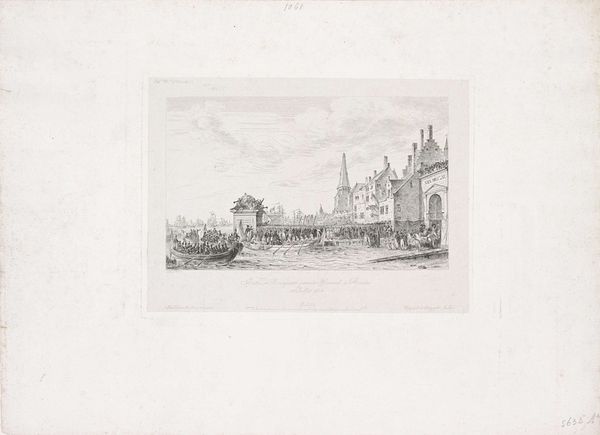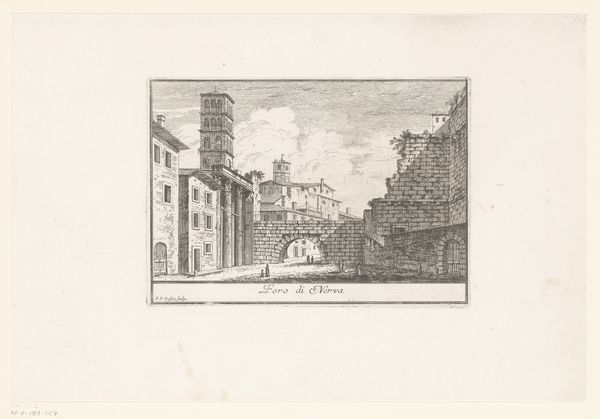
print, etching, engraving
#
dutch-golden-age
# print
#
etching
#
old engraving style
#
landscape
#
archive photography
#
cityscape
#
engraving
Dimensions: height 134 mm, width 146 mm
Copyright: Rijks Museum: Open Domain
Editor: This print, "Stadsgezicht met de Beurs van Hendrik de Keyser te Amsterdam" from 1782, attributed to Cornelis Brouwer, offers such a detailed view of the city. The architecture looks imposing, but it also seems to suggest a certain distance from everyday life. How do you interpret this work in the context of its time? Curator: That distance is key. Consider the social hierarchy reflected in the print itself. "De Beurs," or the Exchange, wasn’t just a building; it was a nexus of power, where economic and social status were performed. The people depicted are largely generic figures; it doesn't provide much perspective regarding issues like class inequality within Dutch society at the time, does it? Editor: Not really. It feels more like a record of the building itself. What's the relationship, then, between this idealized view and the lived experiences of those in Amsterdam? Curator: This idealized view served a specific purpose: to project Amsterdam's prosperity and stability. But that prosperity was built on the backs of marginalized communities – from exploited workers to those impacted by colonial trade. Is there a sense of who actually *benefitted* from the exchange of goods? Editor: Now that you mention it, I don’t see a diverse group of people depicted here. It makes me question whose story is being told, and who is being excluded. Curator: Exactly. And consider the placement of the Exchange relative to the viewer - slightly elevated, separate. Does it not evoke an inherent power dynamic? Editor: I see it now. The print highlights the institution, almost distancing it from any moral consideration of the society it helped to create. Thanks so much! Curator: My pleasure! Reflecting on whose stories are present – and absent – is crucial in understanding these historical representations.
Comments
No comments
Be the first to comment and join the conversation on the ultimate creative platform.
